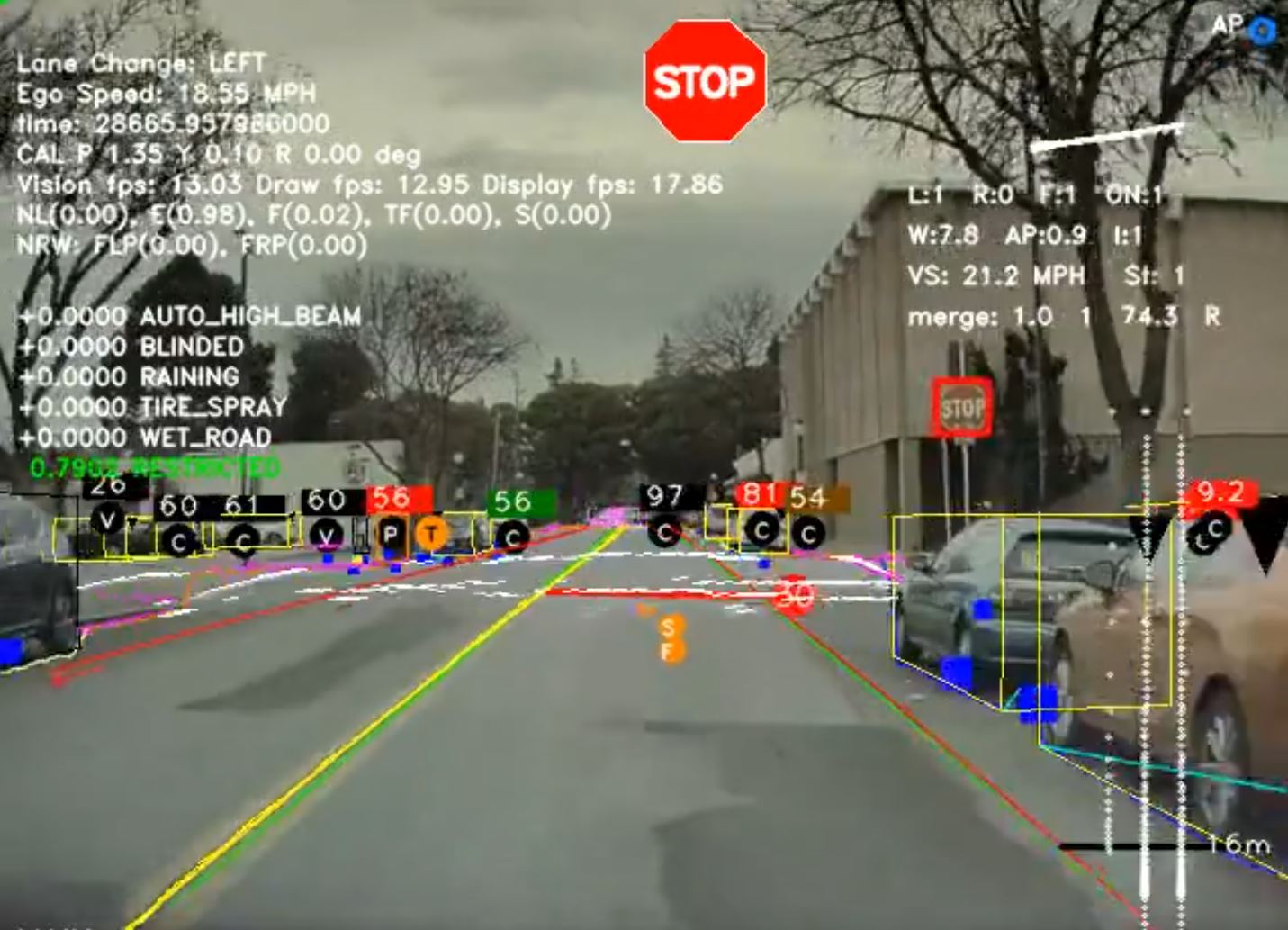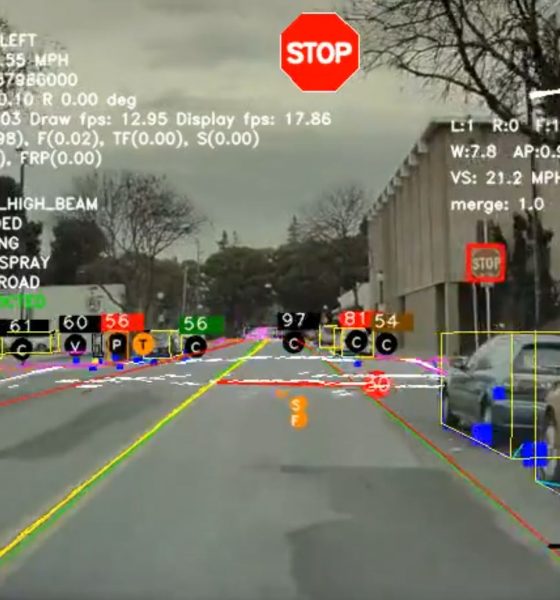

News
Tesla’s Elon Musk will be hosting an AI hackathon party at his house
Elon Musk announced that Tesla will be hosting an AI hackathon, together with the company’s artificial intelligence and autopilot team, at his house in four weeks’ time.
The Tesla chief announced his plans via Twitter on Sunday. Despite impressive numbers revealed during the Q4 2019 earnings call and update, Musk and his Tesla team are not resting on their laurels and remain focused on pursuing advancements to its neural network, which is in the center of Tesla’s goal of achieving a full self-driving vehicle.
During the recent Q4 earnings call, an investor asked the Tesla chief executive for updates on FSD.
“I think that’s looking like maybe it’s going to be couple of months from now. And what isn’t obvious regarding Autopilot and Full Self-Driving is just how much work has been going into improving the foundational elements of autonomy,” Musk said.
Tesla will hold a super fun AI party/hackathon at my house with the Tesla AI/autopilot team in about four weeks. Invitations going out soon.
— Elon Musk (@elonmusk) February 2, 2020
Musk continued to explain how the Tesla team is making great strides in labeling efficiency.
“…in terms of labeling, labeling with video in all eight cameras simultaneously. This is a really, I mean in terms of labeling efficiency, arguably like a three order of magnitude improvement in labeling efficiency. For those who know about this, it’s extremely fundamental, so that’s really great progress on that,” Musk said.
Tesla vehicles rely on a custom chip that boasts of 144 tera operations per second (TOPS) for its self-driving capabilities. This two-chip FSD computer works in tandem with LPDDR4 RAM modules that come with a peak bandwidth of 68 GB/s. There are also two neural network accelerators that work in tandem to process as much as 1TB of data per second. This setup is roughly three times faster, about 80%, and about 1.25 times more power-efficient than the previous hardware. It is also able to process about 2,300 frames per second compared to the 110 frames per second processed by Tesla’s Hardware 2.5.
In his series of tweets on Sunday, Musk also mentioned Tesla’s “Dojo” supercomputer, which is speculated to be capable of processing vast amounts of data to train the company’s neural network. Through active learning, Tesla curates the most useful video clips from its fleet of connected cars and train the neural net to recognize things that it did not previously know.
“Our networks learn from the most complicated and diverse scenarios in the world, iteratively sourced from our fleet of nearly 1M vehicles in real-time. A full build of Autopilot neural networks involves 48 networks that take 70,000 GPU hours to train. Together, they output 1,000 distinct tensors (predictions) at each timestep,” Tesla wrote on the Autopilot AI section of its website.
“At Tesla, using AI to solve self-driving isn’t just icing on the cake, it the cake” – @lexfridman
Join AI at Tesla! It reports directly to me & we meet/email/text almost every day. My actions, not just words, show how critically I view (benign) AI.https://t.co/iF97zvYZRz
— Elon Musk (@elonmusk) February 2, 2020
The last major software update rolled out by Tesla allowed its vehicles to visualize more things while driving in inner-city streets. Teslas now render stoplights, stop signs, traffic cones, traffic pylons, and more.
With the upcoming AI hackathon, Tesla will get together with developers to seek out more efficient algorithms and overall improvements to the core logic for its Full Self-Driving suite through a time-boxed event. With fresh eyes working with the existing AI and autopilot team of Tesla, the carmaker may be able to accelerate the timeline and rollout of its full-featured Full Self-Driving suite sooner.
Further advances in FSD and its Autopilot feature will widen the gap between Tesla and its competitors and solidify the company’s position as one of the leading automakers in the world. These improvements will also take Tesla a step closer to the possibility of Robotaxis that they can deploy at scale.
The hackathon will also allow Tesla to fish for new AI talents to join the team. On Sunday, Musk also mentioned that the electric carmaker is looking for world-class chip designers and C++/C engineers for vehicle control and other functions of Tesla vehicles.
Musk reiterated that educational attainment is not important when joining Tesla but rather a clear understanding of how AI and neural networks function and the ability to build useful applications using that knowledge.

News
Tesla FSD fleet is nearing 7 billion total miles, including 2.5 billion city miles
As can be seen on Tesla’s official FSD webpage, vehicles equipped with the system have now navigated over 6.99 billion miles.

Tesla’s Full Self-Driving (Supervised) fleet is closing in on almost 7 billion total miles driven, as per data posted by the company on its official FSD webpage.
These figures hint at the massive scale of data fueling Tesla’s rapid FSD improvements, which have been quite notable as of late.
FSD mileage milestones
As can be seen on Tesla’s official FSD webpage, vehicles equipped with the system have now navigated over 6.99 billion miles. Tesla owner and avid FSD tester Whole Mars Catalog also shared a screenshot indicating that from the nearly 7 billion miles traveled by the FSD fleet, more than 2.5 billion miles were driven inside cities.
City miles are particularly valuable for complex urban scenarios like unprotected turns, pedestrian interactions, and traffic lights. This is also the difference-maker for FSD, as only complex solutions, such as Waymo’s self-driving taxis, operate similarly on inner-city streets. And even then, incidents such as the San Francisco blackouts have proven challenging for sensor-rich vehicles like Waymos.
Tesla’s data edge
Tesla has a number of advantages in the autonomous vehicle sector, one of which is the size of its fleet and the number of vehicles training FSD on real-world roads. Tesla’s nearly 7 billion FSD miles then allow the company to roll out updates that make its vehicles behave like they are being driven by experienced drivers, even if they are operating on their own.
So notable are Tesla’s improvements to FSD that NVIDIA Director of Robotics Jim Fan, after experiencing FSD v14, noted that the system is the first AI that passes what he described as a “Physical Turing Test.”
“Despite knowing exactly how robot learning works, I still find it magical watching the steering wheel turn by itself. First it feels surreal, next it becomes routine. Then, like the smartphone, taking it away actively hurts. This is how humanity gets rewired and glued to god-like technologies,” Fan wrote in a post on X.
News
Tesla starts showing how FSD will change lives in Europe
Local officials tested the system on narrow country roads and were impressed by FSD’s smooth, human-like driving, with some calling the service a game-changer for everyday life in areas that are far from urban centers.

Tesla has launched Europe’s first public shuttle service using Full Self-Driving (Supervised) in the rural Eifelkreis Bitburg-Prüm region of Germany, demonstrating how the technology can restore independence and mobility for people who struggle with limited transport options.
Local officials tested the system on narrow country roads and were impressed by FSD’s smooth, human-like driving, with some calling the service a game-changer for everyday life in areas that are far from urban centers.
Officials see real impact on rural residents
Arzfeld Mayor Johannes Kuhl and District Administrator Andreas Kruppert personally tested the Tesla shuttle service. This allowed them to see just how well FSD navigated winding lanes and rural roads confidently. Kruppert said, “Autonomous driving sounds like science fiction to many, but we simply see here that it works totally well in rural regions too.” Kuhl, for his part, also noted that FSD “feels like a very experienced driver.”
The pilot complements the area’s “Citizen Bus” program, which provides on-demand rides for elderly residents who can no longer drive themselves. Tesla Europe shared a video of a demonstration of the service, highlighting how FSD gives people their freedom back, even in places where public transport is not as prevalent.
What the Ministry for Economic Affairs and Transport says
Rhineland-Palatinate’s Minister Daniela Schmitt supported the project, praising the collaboration that made this “first of its kind in Europe” possible. As per the ministry, the rural rollout for the service shows FSD’s potential beyond major cities, and it delivers tangible benefits like grocery runs, doctor visits, and social connections for isolated residents.
“Reliable and flexible mobility is especially vital in rural areas. With the launch of a shuttle service using self-driving vehicles (FSD supervised) by Tesla in the Eifelkreis Bitburg-Prüm, an innovative pilot project is now getting underway that complements local community bus services. It is the first project of its kind in Europe.
“The result is a real gain for rural mobility: greater accessibility, more flexibility and tangible benefits for everyday life. A strong signal for innovation, cooperation and future-oriented mobility beyond urban centers,” the ministry wrote in a LinkedIn post.
News
Tesla China quietly posts Robotaxi-related job listing
Tesla China is currently seeking a Low Voltage Electrical Engineer to work on circuit board design for the company’s autonomous vehicles.

Tesla has posted a new job listing in Shanghai explicitly tied to its Robotaxi program, fueling speculation that the company is preparing to launch its dedicated autonomous ride-hailing service in China.
As noted in the listing, Tesla China is currently seeking a Low Voltage Electrical Engineer to work on circuit board design for the company’s autonomous vehicles.
Robotaxi-specific role
The listing, which was shared on social media platform X by industry watcher @tslaming, suggested that Tesla China is looking to fill the role urgently. The job listing itself specifically mentions that the person hired for the role will be working on the Low Voltage Hardware team, which would design the circuit boards that would serve as the nervous system of the Robotaxi.
Key tasks for the role, as indicated in the job listing, include collaboration with PCB layout, firmware, mechanical, program management, and validation teams, among other responsibilities. The role is based in Shanghai.
China Robotaxi launch
China represents a massive potential market for robotaxis, with its dense urban centers and supportive policies in select cities. Tesla has limited permission to roll out FSD in the country, though despite this, its vehicles have been hailed as among the best in the market when it comes to autonomous features. So far, at least, it appears that China supports Tesla’s FSD and Robotaxi rollout.
This was hinted at in November, when Tesla brought the Cybercab to the 8th China International Import Expo (CIIE) in Shanghai, marking the first time that the autonomous two-seater was brought to the Asia-Pacific region. The vehicle, despite not having a release date in China, received a significant amount of interest among the event’s attendees.








